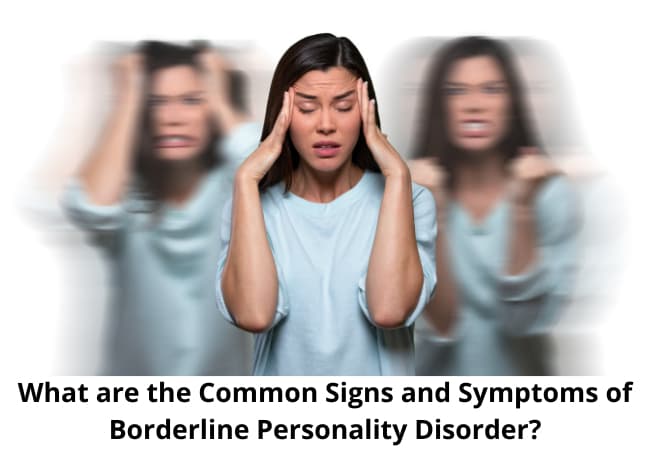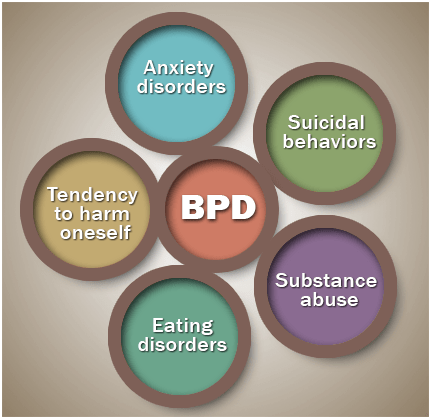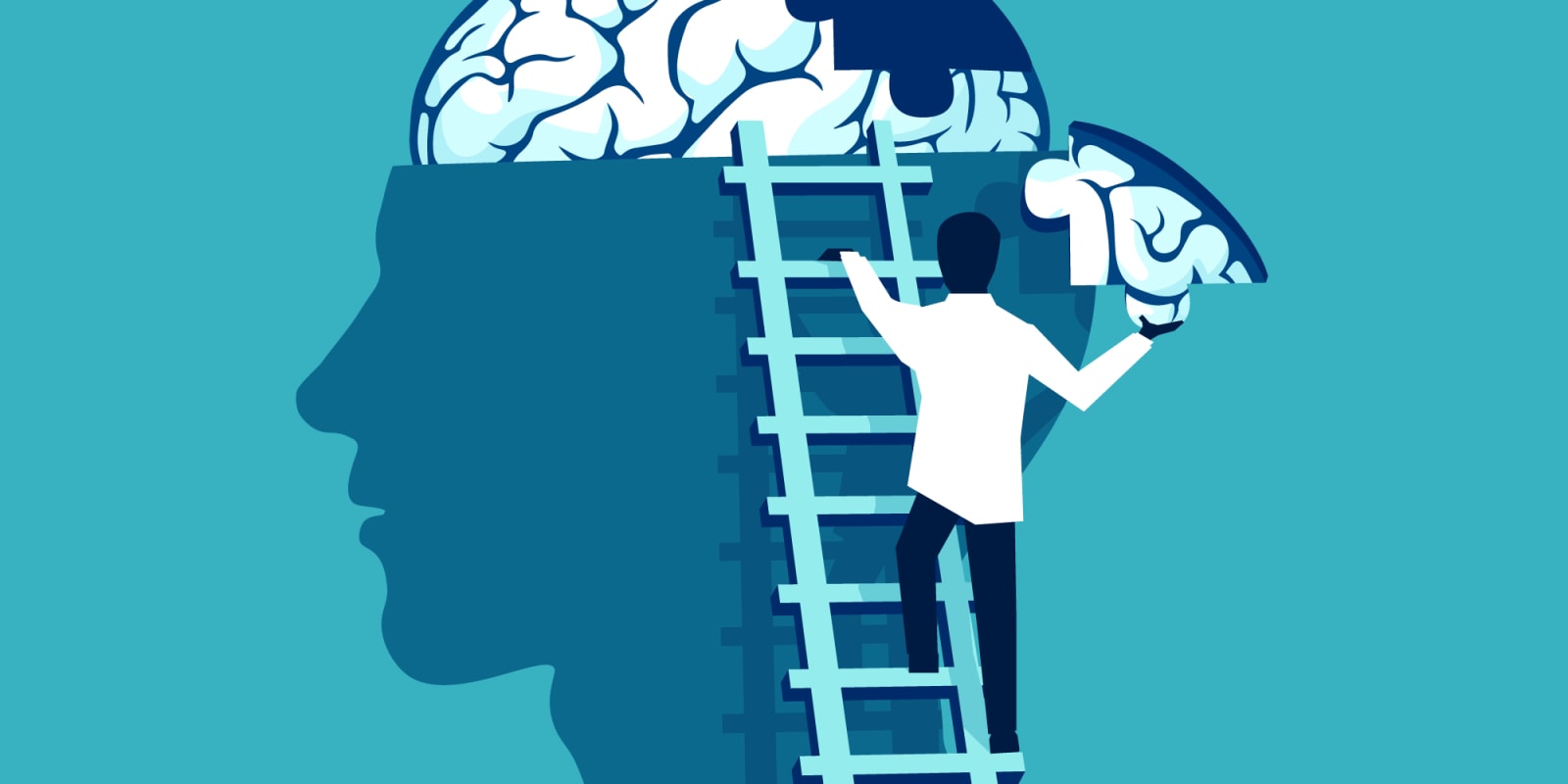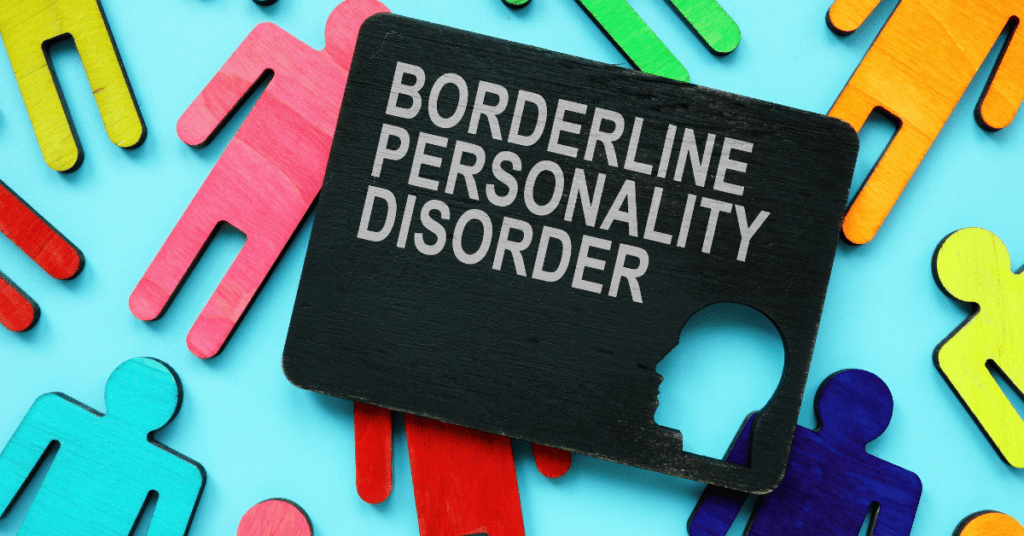Borderline Personality Disorder (BPD) is a mental illness that affects about 1.6% of the population, making it more prevalent than schizophrenia and bipolar disorder. BPD is characterized by unstable moods, impulsiveness, difficulty maintaining relationships, and a distorted self-image. While there are no cures for BPD, recent research has shown promising results with treatment plans like Dialectical Behavior Therapy (DBT). If you or someone you know suffers from borderline personality disorder then this article will help provide insight into how to deal with the symptoms of this mental illness.
Contents
What Is Borderline Personality Disorder?
 Borderline personality disorder is a mental illness that can make everyday life hard. When someone has a borderline personality disorder, their moods and emotions may change quickly and they may not be able to handle certain aspects of their lives well.
Borderline personality disorder is a mental illness that can make everyday life hard. When someone has a borderline personality disorder, their moods and emotions may change quickly and they may not be able to handle certain aspects of their lives well.
Borderline personality disorder often has unstable relationships with other people because of how difficult it can be for them to manage their moods and feelings on a day-to-day basis. People who suffer from Borderline personality disorders also tend to struggle managing money or understanding what tasks need to be completed at work or home. They might do things impulsively without thinking about the consequences, such as spending sprees or having an unplanned pregnancy.
Signs of Borderline Personality Disorder

These are some signs of borderline personality disorder:
Intense Fear of Abandonment
People with a borderline personality disorder often have an intense fear of abandonment. This might mean that they constantly need to be in contact with their loved ones, or it could manifest as a fear of being left alone.
Unstable Moods
The moods of people with borderline personality disorder can change quickly and without warning. One minute they may be happy and the next minute they could be feeling sad, angry, or scared for no reason at all.
Poor Self-Image
Many people with this disorder have a poor self-image. They may see themselves as unworthy, unlovable, or incompetent. This sign can cause problems in relationships and at work.
Impulsive Behaviors
People with this disorder may engage in impulsive behaviors such as spending sprees, gambling, unsafe sexual practices, or binge eating. These sorts of risky activities can lead to serious consequences like bankruptcy or sexually transmitted diseases.
Suicidal Thoughts and Tendencies
Many people who suffer from borderline personality disorder think about ending their life because they feel like it would be better off for themselves and the people around them if they were gone. This could result in suicide attempts that are not intended to end up killing someone but instead used to express pain or desperation over a situation when another method is unavailable at the time.
Anger
People with a borderline personality disorder may experience a lot of anger. This could be directed at themselves, other people, or the world in general. This means that they could have problems managing their anger, which can lead to destructive behaviors.
Suspicious Thoughts and Beliefs
People with borderline personality disorder often believe that other people are out to get them and use their malicious intentions as an excuse for violence or aggression. They may also feel like they have been tricked into believing things that aren’t true, which can cause anxiety and confusion over what is real and what isn’t.
Causes of Borderline Personality Disorder

These are some of the causes of borderline personality disorder:
Genetic Factors
Many people with borderline personality disorder have a family member that has the same condition or another mental illness. This means that there is likely some kind of genetic factor at play in their development.
Brain Abnormalities
People who suffer from borderline personality disorders often show signs of abnormalities within their brains, including changes to brain tissue and reduced activity in certain regions. There are also studies showing malfunctions in how different chemicals communicate with each other inside the body which could contribute to this type of disorder as well.
Environmental Factors
Many environmental factors might contribute to someone developing a borderline personality disorder—things like growing up around drug use, physical abuse, neglect, or inconsistent parenting. These types of experiences could affect the way someone thinks about themselves and other people, which may result in borderline personality disorder symptoms appearing later on in life.
Trauma
Some people may develop borderline personality disorder after experiencing a traumatic event, like sexual abuse or violence. This type of experience can leave someone feeling like they are unsafe and that the world is not a safe place, which could lead to them developing some of the symptoms associated with a borderline personality disorder.
Instability in Childhood
People who did not have a stable childhood are more likely to develop a borderline personality disorder. This could be due to the fact that they never learned how to trust other people or cope with difficult emotions in a healthy way. This instability can also manifest as chaotic and unstable relationships, which is a hallmark symptom of BPD.
Serotogenic Dysfunction
This can also be a cause of borderline personality disorder. Serotogenic dysfunction is basically when the brain doesn’t produce enough serotonin, which is a chemical that helps to regulate moods and emotions. This can lead to someone feeling extreme highs and lows, as well as symptoms of depression and anxiety.
Diagnosis of Borderline Personality Disorder

The diagnosis of this disorder can be difficult because there are so many symptoms that overlap with other mental illnesses. There are different diagnosis methods that doctors use to determine if someone has BPD. Some of these are:
Self-Evaluation
In order for someone to be diagnosed with borderline personality disorder, they have to exhibit a majority of the symptoms listed in the DSM. They also must experience these symptoms consistently and over a long period of time.
Diagnostic Interview
This is a longer interview that is used to help diagnose mental illnesses. It can take up to two hours to complete and includes questions about someone’s personal history, thoughts, feelings, and behavior.
Structured Clinical Interviews
These interviews are similar to the diagnostic interview, but they are specifically designed to assess for borderline personality disorder. They usually include questions about relationships, impulsivity, emotional stability, and self-harm behaviors.
Rating Scales
There are different rating scales that doctors use to measure the severity of borderline personality disorder symptoms. These may include the Zanarini Rating Scale, the Personality Diagnostic Questionnaire-Revised (PDQ-R), and the McLean Screening Instrument for Borderline Personality Disorder.
Treatment for Borderline Personality Disorder
There are a variety of different options when it comes to treatment for someone with BDP. Some people choose medications while others prefer psychotherapy or a combination of both treatments. Each person responds best to certain types of treatment based on their unique needs and background. So there is no one size fits all approach here.
Medications
 Medications that are commonly prescribed for borderline personality disorder. These include antidepressants, mood stabilizers, and antipsychotics. These medications can help to regulate someone’s moods and emotions. They can also help to control some of the more troublesome symptoms of BPD.
Medications that are commonly prescribed for borderline personality disorder. These include antidepressants, mood stabilizers, and antipsychotics. These medications can help to regulate someone’s moods and emotions. They can also help to control some of the more troublesome symptoms of BPD.
Psychotherapy
 There are different types of psychotherapy that can be effective in treating borderline personality disorder. Some common therapies include cognitive-behavioral therapy (CBT), dialectical behavior therapy (DBT), and schema-focused therapy. These therapies focus on helping people learn healthy coping skills and how to manage their emotions effectively.
There are different types of psychotherapy that can be effective in treating borderline personality disorder. Some common therapies include cognitive-behavioral therapy (CBT), dialectical behavior therapy (DBT), and schema-focused therapy. These therapies focus on helping people learn healthy coping skills and how to manage their emotions effectively.
Self-Help Groups
 Another option for treatment is self-help groups. These groups provide a safe place for people with BPD to share their experiences and connect with others who have the same illness. This can be a good way to process some of those emotions and learn how to manage them as well as find support from others who are going through similar experiences.
Another option for treatment is self-help groups. These groups provide a safe place for people with BPD to share their experiences and connect with others who have the same illness. This can be a good way to process some of those emotions and learn how to manage them as well as find support from others who are going through similar experiences.
Coping -Up With Borderline Personality Disorder

These are some of the strategies for coping up with this disorder.
Avoid Triggers
One of the most effective ways to cope up with BPD is by avoiding triggers that can lead to mood swings and emotional instability. This includes staying away from stressful situations, people who trigger negative emotions, or places where someone has had a bad experience in the past.
Build Support System
Having supportive friends and family members around you can help soothe some of those difficult feelings. They can also provide positive reinforcement when things are going well. Try building relationships with others who have similar interests. You should also understand what it’s like living with this illness. This is so that they don’t invalidate your experiences or make you feel judged for how you are feeling.
Take Care Of Yourself
Self-care activities such as yoga, meditation, cooking classes, etc., can help someone with BPD take a break from their stressful life and enjoy something new. These activities can also provide an emotional release. This is when things get tough. That is why it’s important to make time for them in addition to working on other coping skills.
Try Alternative Therapies
There are also different types of alternative therapies that can help. These may include activities like art therapy, music therapy, and animal-assisted therapy. Many people benefit from participating in these activities as they provide them with an effective stress management tool that doesn’t require medication or even talking to someone.
Make Your Own Treatment Plan
It’s also important to remember that there is no one-size-fits-all approach when it comes to treating BPD. Every person is unique and has different symptoms, needs, triggers, etc., so you should make your own treatment plan based on what works best for you.
Try Combination of Treatments
It’s often helpful to try a combination of treatments, such as medications, psychotherapy, and self-help groups. This can help to target different areas that are causing difficulty and provide you with the best chance for long-term success.
Conclusion
In conclusion, a borderline personality disorder can be a difficult condition to manage. This disorder can cause a lot of instability in someone’s life and make it difficult to cope with everyday stressors. However, there are many different types of treatments that can be effective in managing BPD. It is important to find what works best for you and stick with it.
If you are looking for affordable Online Counseling MantraCare can help: Book a trial therapy session


